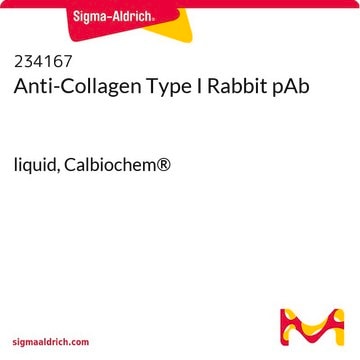05-1478
Anti-RUNX2 Antibody, clone AS110
clone AS110, from mouse
Synonym(s):
Acute myeloid leukemia 3 protein, CBF-alpha 1, Core-binding factor subunit alpha-1, Oncogene AML-3, Osteoblast-specific transcription factor 2, PEA2-alpha A, PEBP2-alpha A, Polyomavirus enhancer-binding protein 2 alpha A subunit, SL3-3 enhancer factor 1
About This Item
Recommended Products
biological source
mouse
Quality Level
antibody form
purified antibody
antibody product type
primary antibodies
clone
AS110, monoclonal
species reactivity
human
technique(s)
immunocytochemistry: suitable
western blot: suitable
isotype
IgG2b
NCBI accession no.
UniProt accession no.
shipped in
wet ice
target post-translational modification
unmodified
Gene Information
human ... RUNX2(860)
General description
Specificity
Immunogen
Application
Epigenetics & Nuclear Function
Transcription Factors
Quality
Western Blot Analysis:
Anti-RUNX2, clone AS110 detected RUNX at 1:1,000 to 1:2,000 dilution in HL-60 cell lysate resolved via SDS-PAGE and transferred to PVDF.
Target description
Physical form
Storage and Stability
Handling Recommendations: Upon receipt, and prior to removing the cap, centrifuge the vial and gently mix the solution.
Other Notes
Disclaimer
Not finding the right product?
Try our Product Selector Tool.
Storage Class Code
12 - Non Combustible Liquids
WGK
WGK 1
Flash Point(F)
Not applicable
Flash Point(C)
Not applicable
Certificates of Analysis (COA)
Search for Certificates of Analysis (COA) by entering the products Lot/Batch Number. Lot and Batch Numbers can be found on a product’s label following the words ‘Lot’ or ‘Batch’.
Already Own This Product?
Find documentation for the products that you have recently purchased in the Document Library.
Our team of scientists has experience in all areas of research including Life Science, Material Science, Chemical Synthesis, Chromatography, Analytical and many others.
Contact Technical Service








